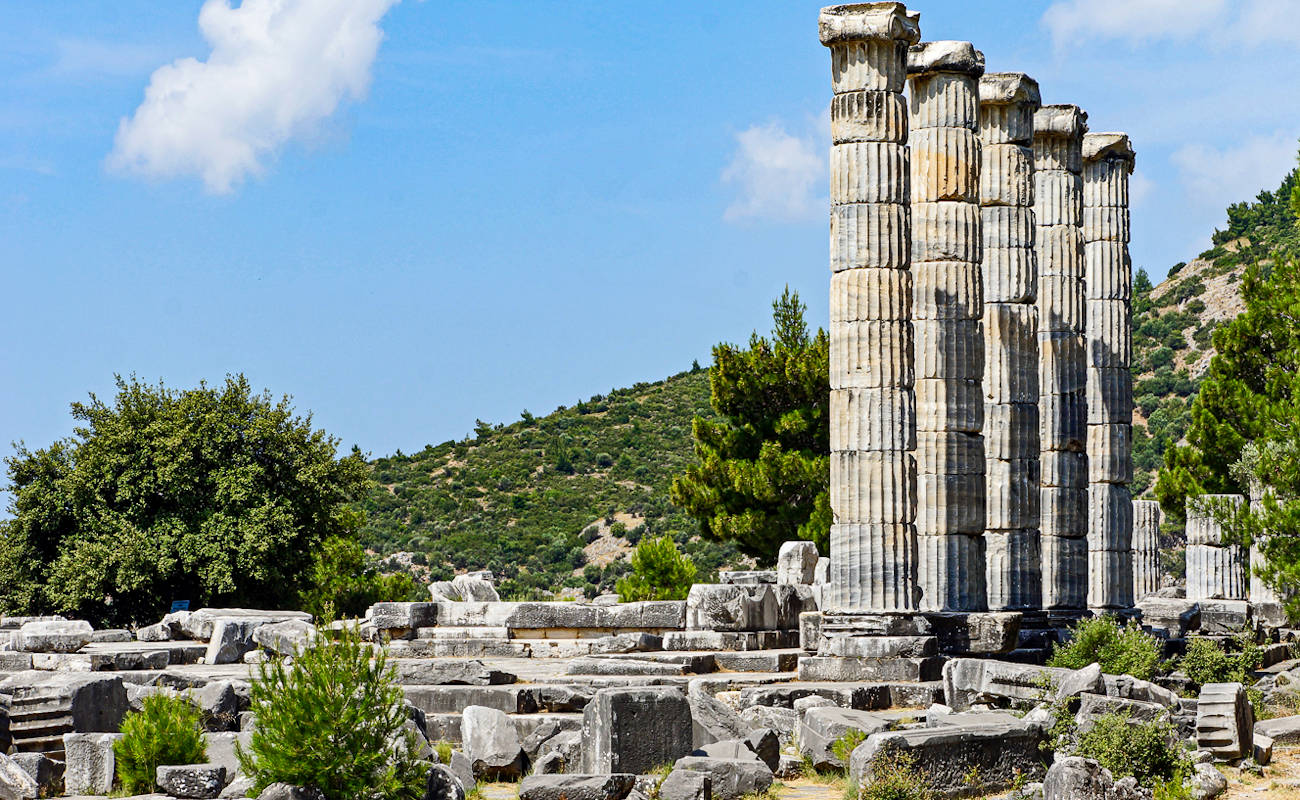
Priene an Ancient Greek City
Priene an ancient Greek city located in modern-day Aydın, Turkey, is celebrated for its well-planned grid layout and remarkable architectural remains. Founded around 350 BC, Priene sits strategically on the slopes of Mount Mycale, offering stunning panoramic views of the fertile plains below and the distant Aegean Sea. Its history and significance are intertwined with the nearby city of Ephesus, another iconic ancient site in Turkey.
One of Priene’s standout features is its grid-based urban planning, setting a precedent for future city designs. The city’s layout included meticulously organized streets, a central agora (marketplace), and an acropolis perched atop the hill. Priene’s grid system was a testament to the ancient Greeks’ emphasis on order and symmetry in their urban environments.
Priene’s Temple of Athena, located on the city’s acropolis, is an architectural masterpiece and one of its most prominent structures. Designed by the renowned architect Pytheos, who also contributed to the construction of the Mausoleum at Halicarnassus, another of the Seven Wonders of the Ancient World, this temple showcased the classical Doric architectural style, characterized by intricate details and elegant proportions.
While Priene itself held cultural and intellectual significance, its history is intertwined with that of Ephesus, another illustrious ancient city located nearby. Ephesus, one of the best-preserved ancient cities globally, boasts iconic landmarks such as the Library of Celsus, the Grand Theater, and the Temple of Artemis. The interconnectedness of these two cities underscores the rich cultural and historical tapestry of the region.
Despite the passage of centuries and the inevitable decline of ancient cities, Priene continues to stand as a captivating archaeological site. Visitors can explore its well-preserved streets, marvel at the remnants of ancient buildings, and reflect on the achievements of this remarkable Greek city. In the context of Ephesus, Priene adds another layer of historical depth, emphasizing the enduring legacy of classical Greek civilization and the importance of urban planning and architecture in antiquity.
